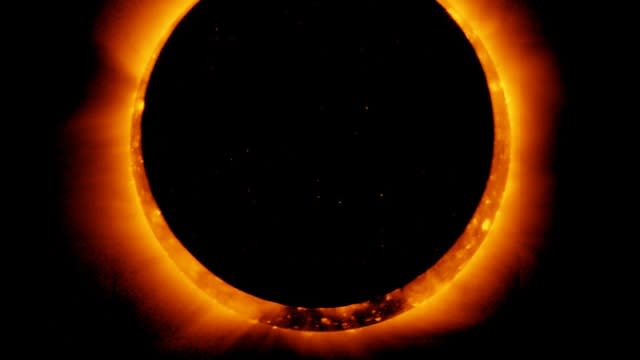What to expect from this weekend's 'ring of fire' eclipse

On Oct.14, 2023, skies above North, Central and South America will darken in an annular solar eclipse. Here's what you need to know.
An annular eclipse occurs when the moon passes between Earth and the sun at the furthest point in its orbit from Earth. The distance between Earth and the moon means the moon will not appear to cover the entire disc of the Sun.
The eclipse creates what appears to be a ring of sunlight, which is why an annular eclipse is also known as a "ring of fire" eclipse.
Because the sun is not completely obscured by the moon, it is not safe to observe the event without eye protection like eclipse glasses or a solar filter on a telescope.
SEE MORE: Texas power regulators prepare for October solar eclipse
In the U.S., the path of maximum coverage during the eclipse will extend from Oregon's west coast to the southern tip of Texas, in a band roughly 152 miles wide. Cities in this band include Eugene, Oregon; Albuquerque, New Mexico; and San Antonio and Corpus Christi, Texas.
In this area, the darkest moments of the eclipse will last between one and five minutes.
Those in areas further away from the main path will see less of the sun obscured overall.
Outside of the U.S., the path of maximum coverage will also cross Mexico, Guatemala, Belize, Honduras, Nicaragua, and Panama; and Colombia and northern Brazil in South America.
